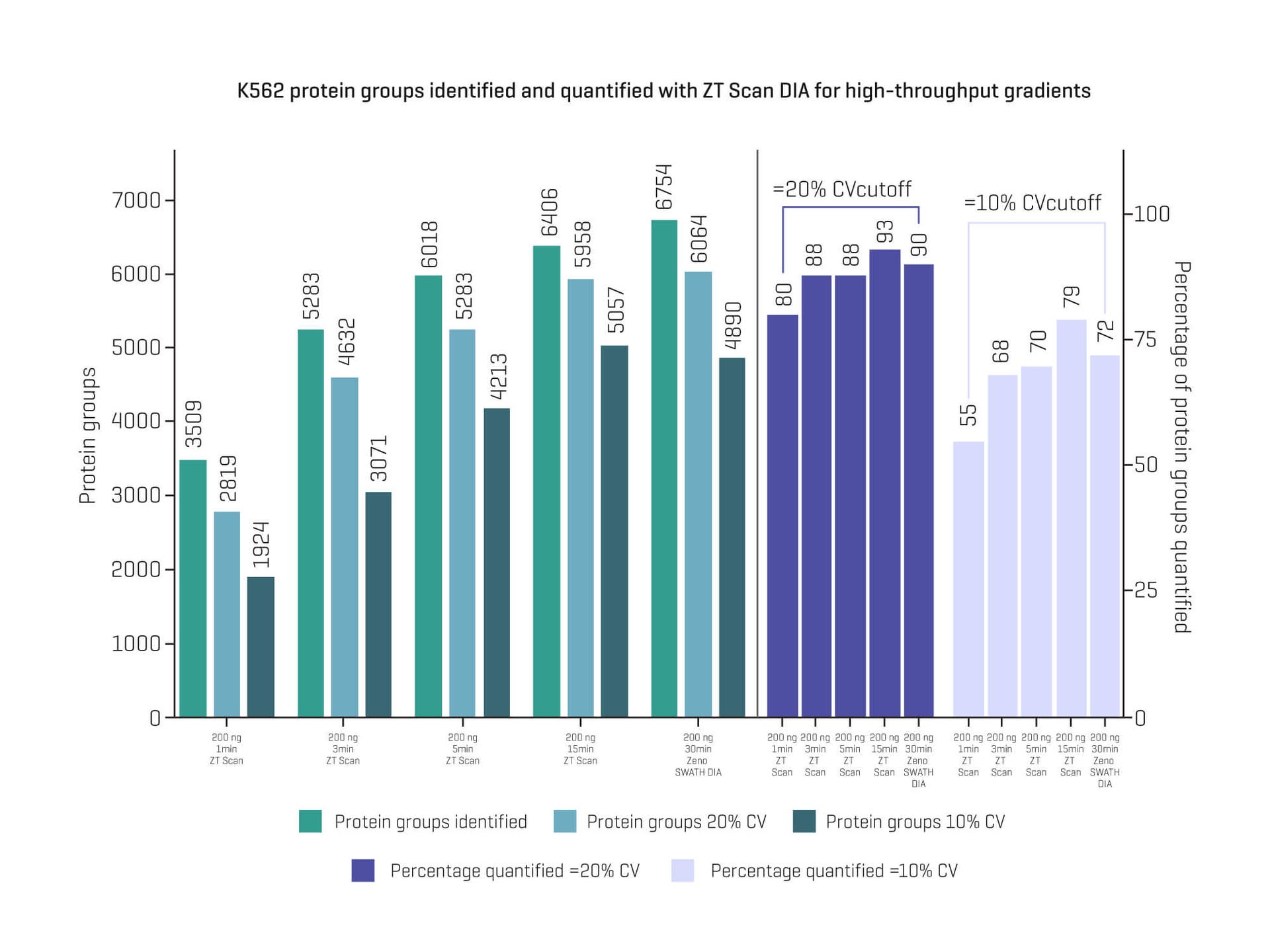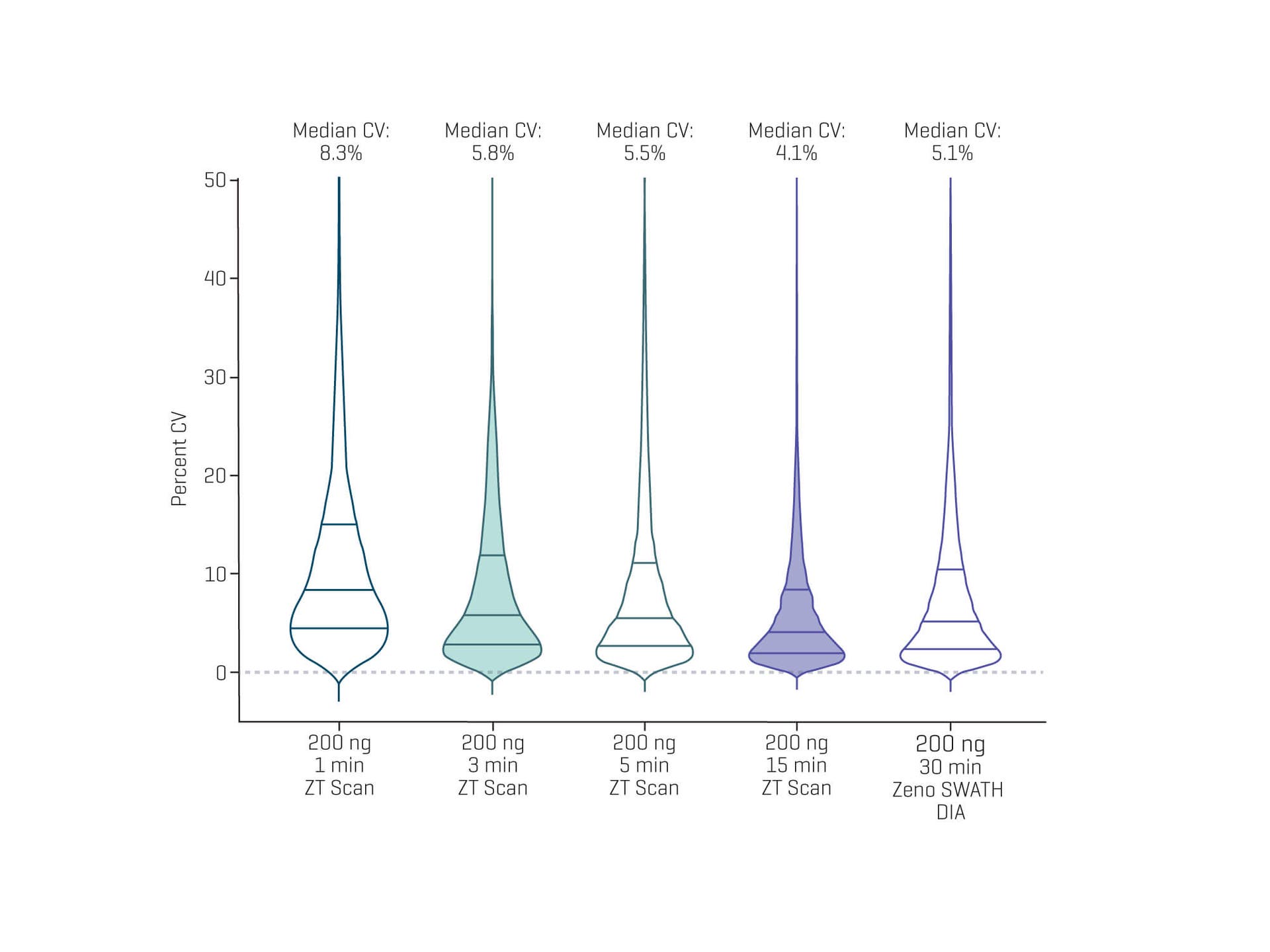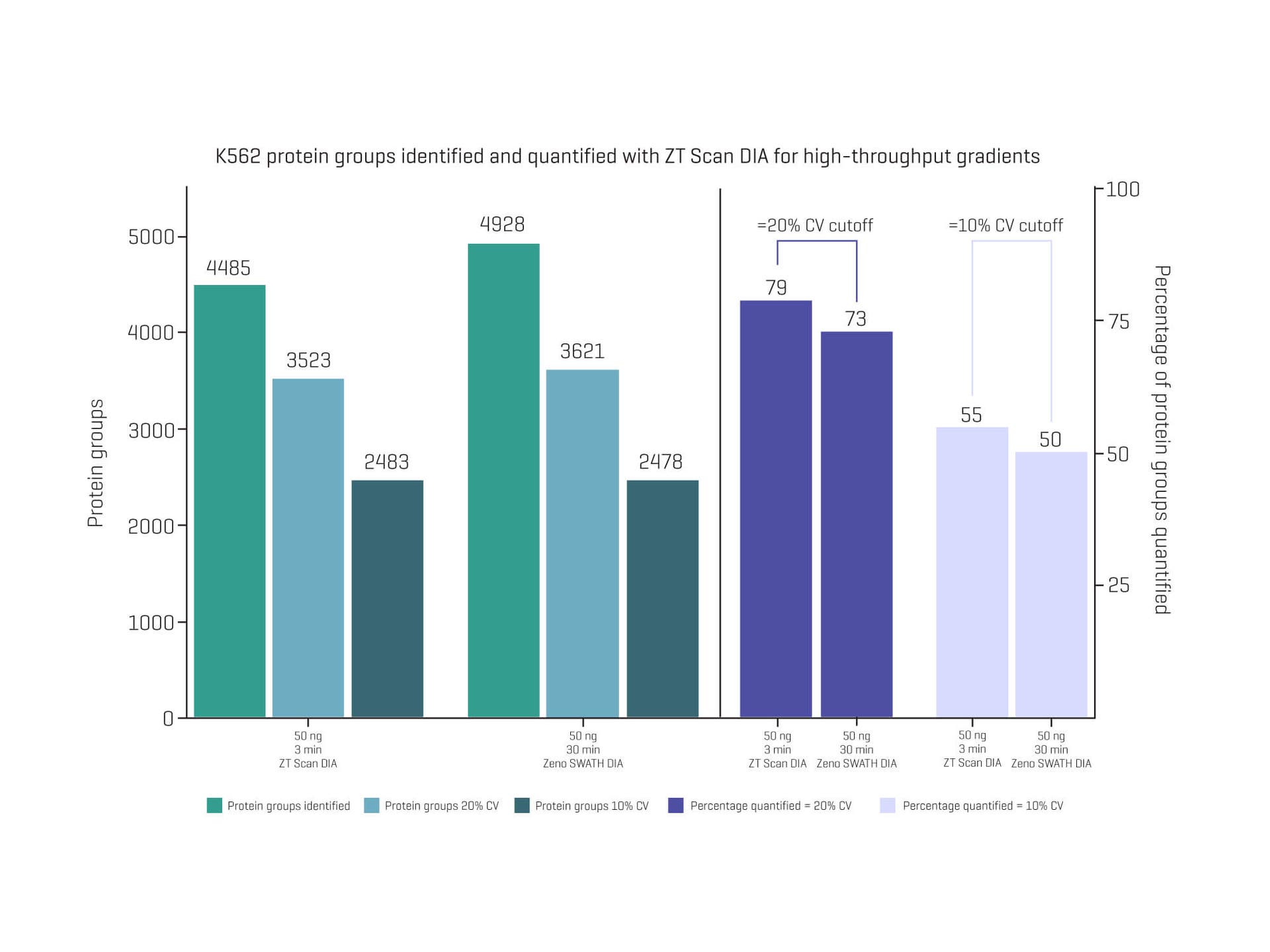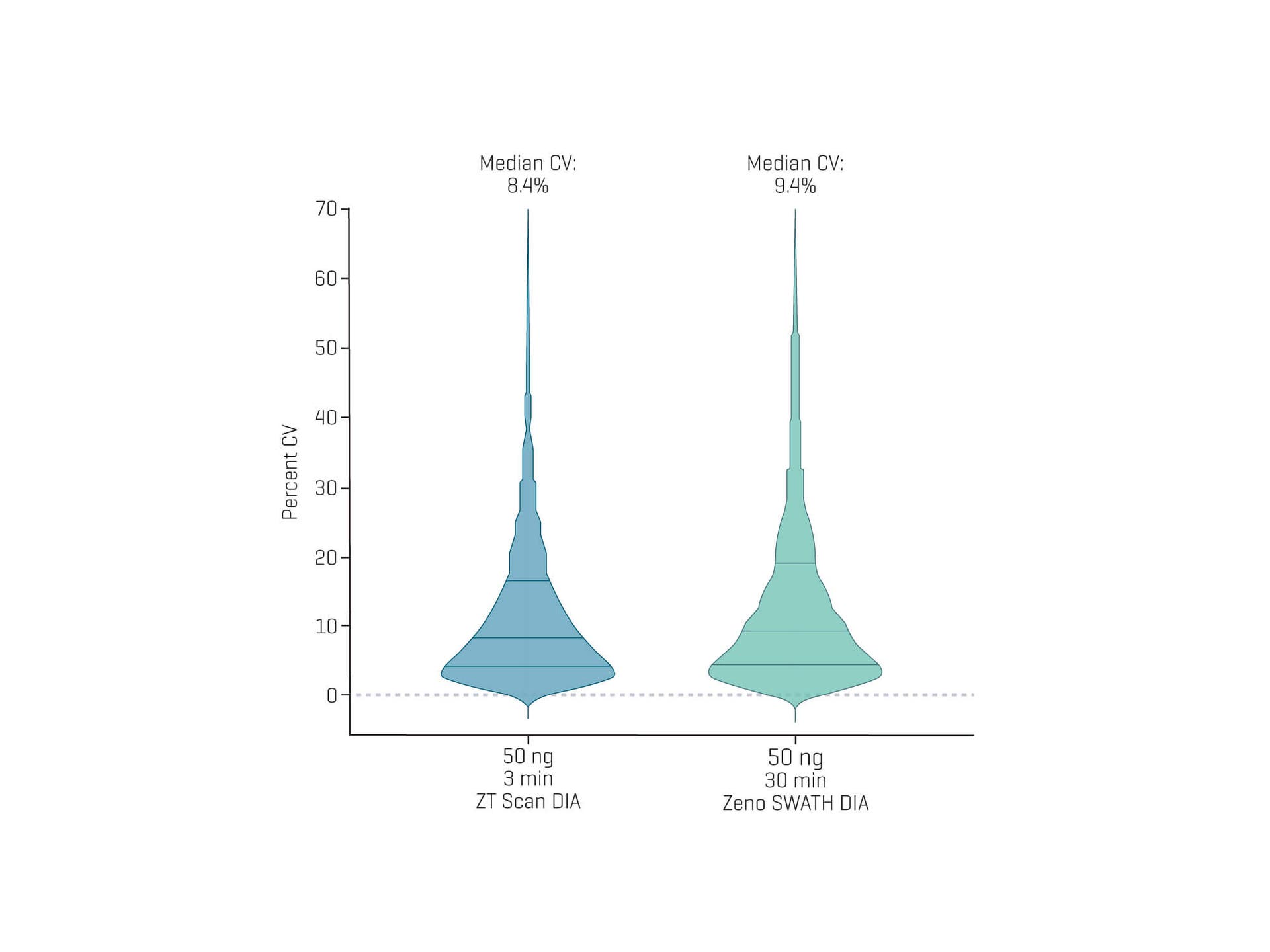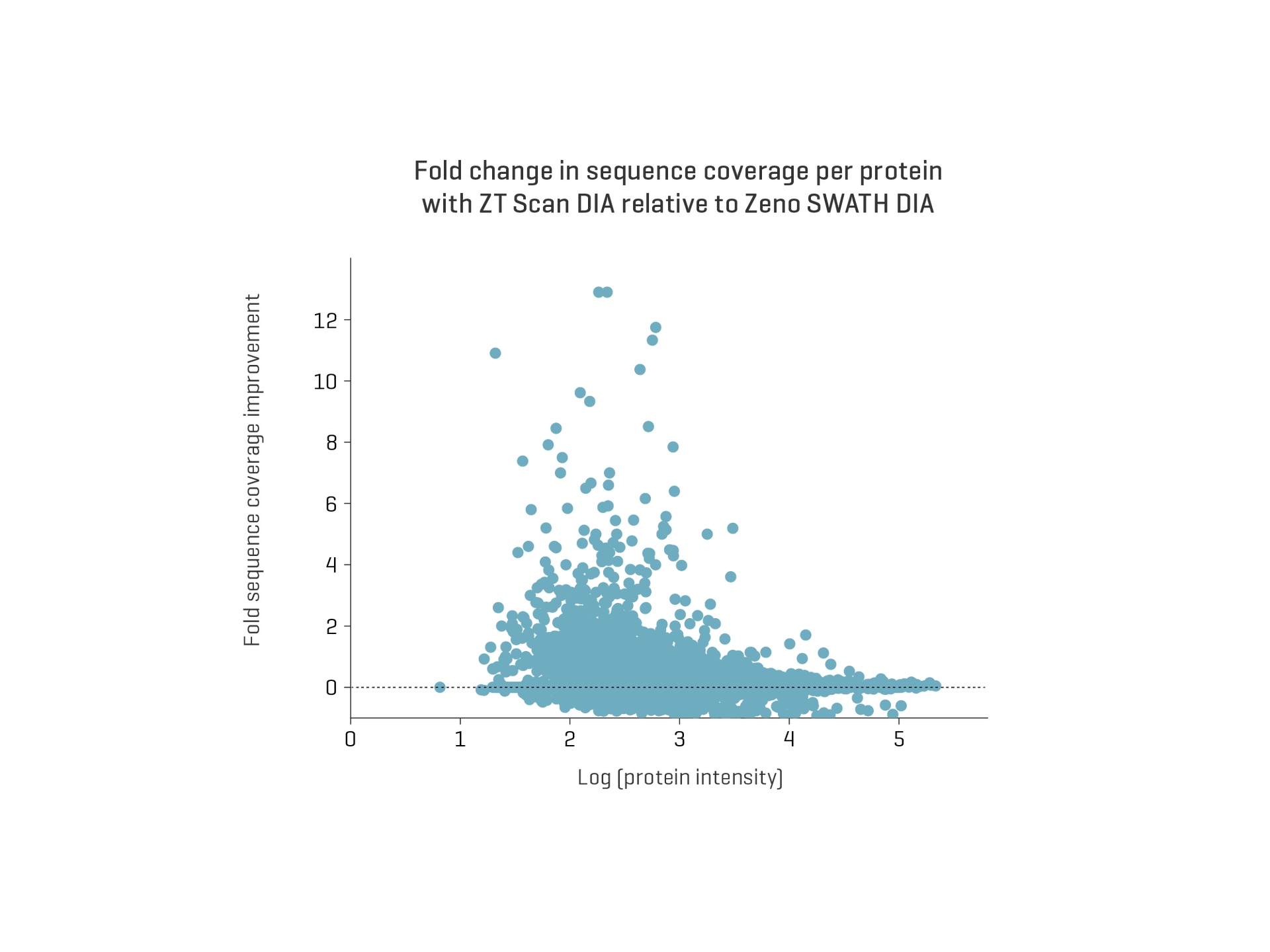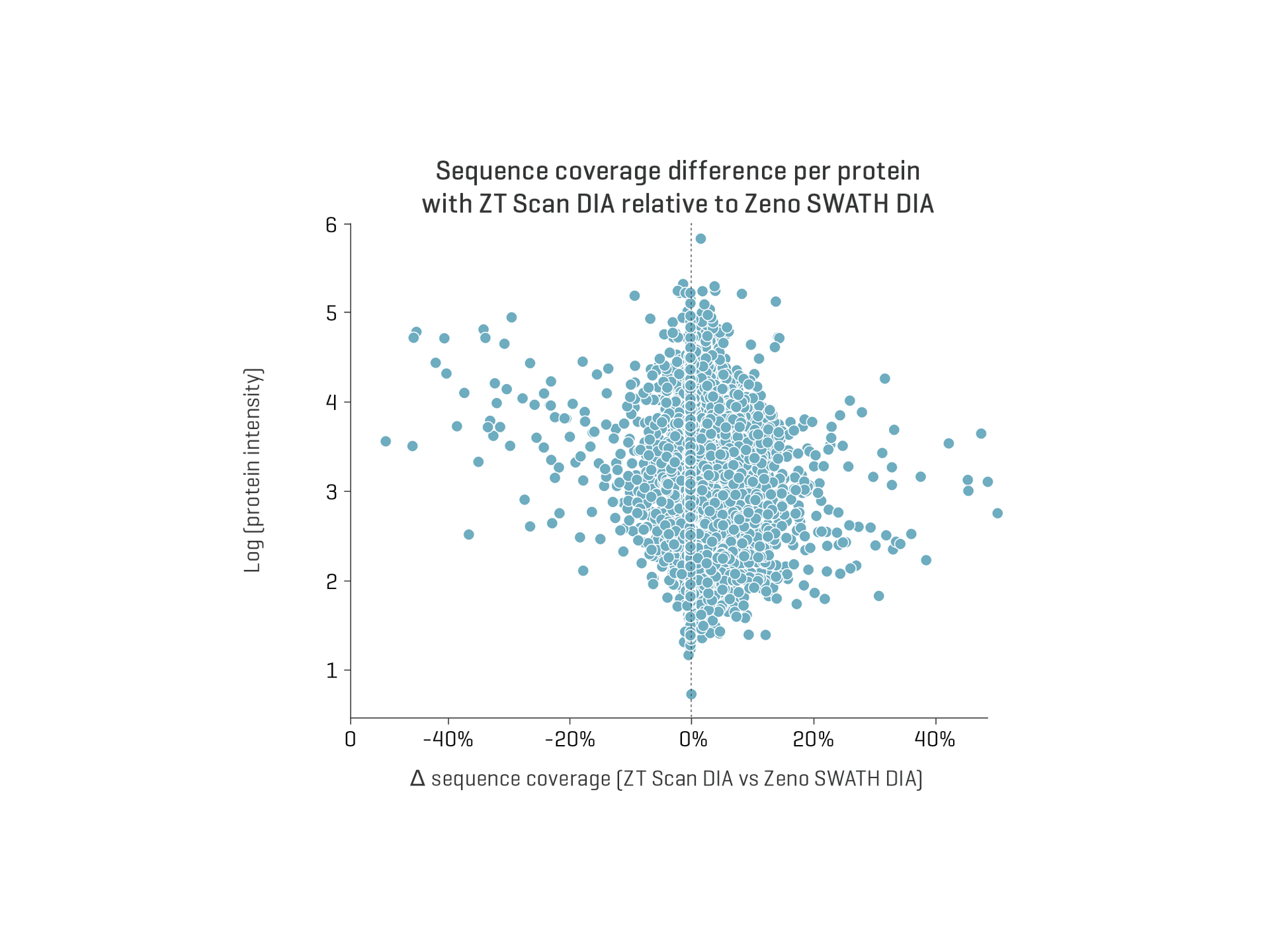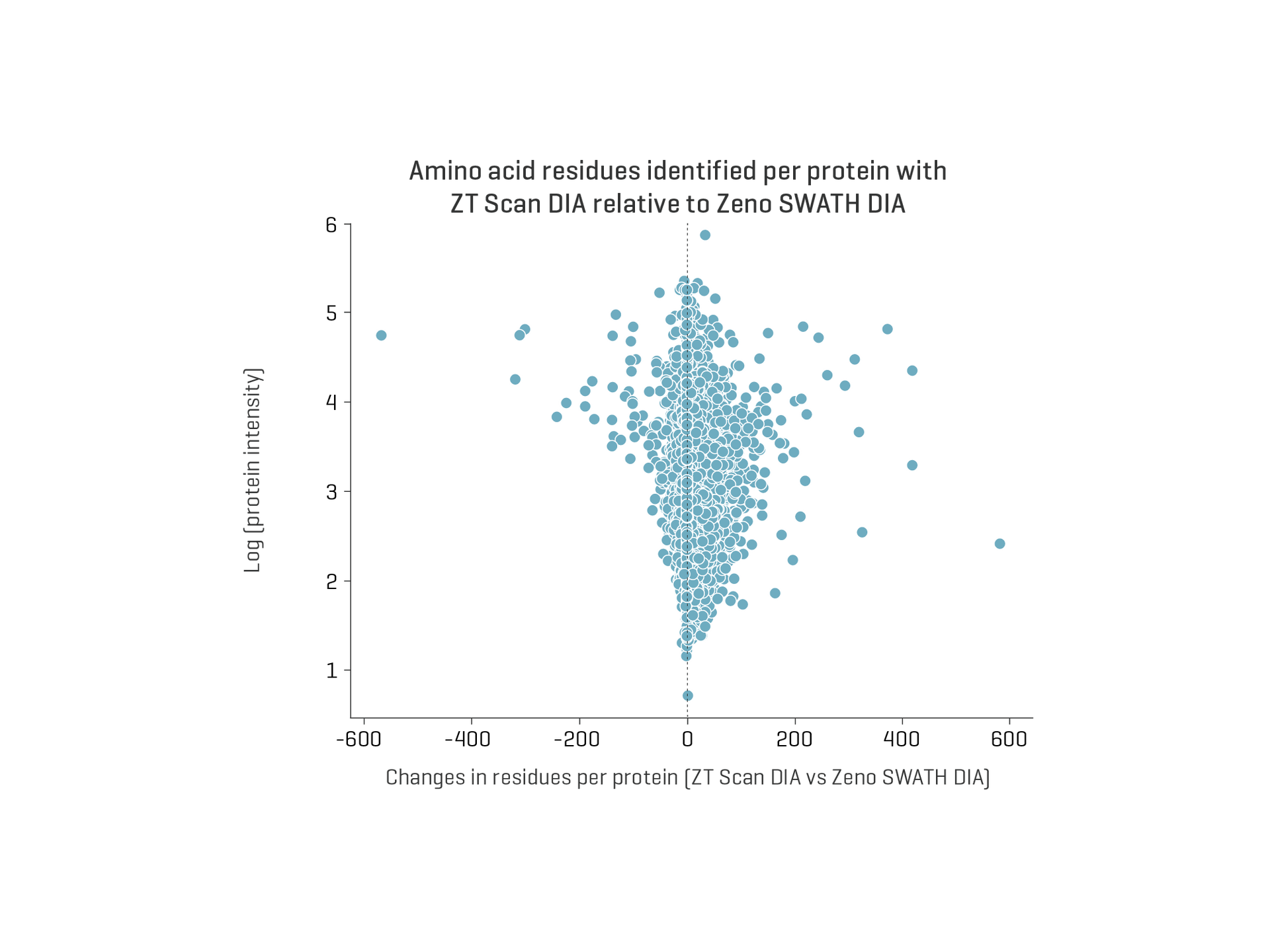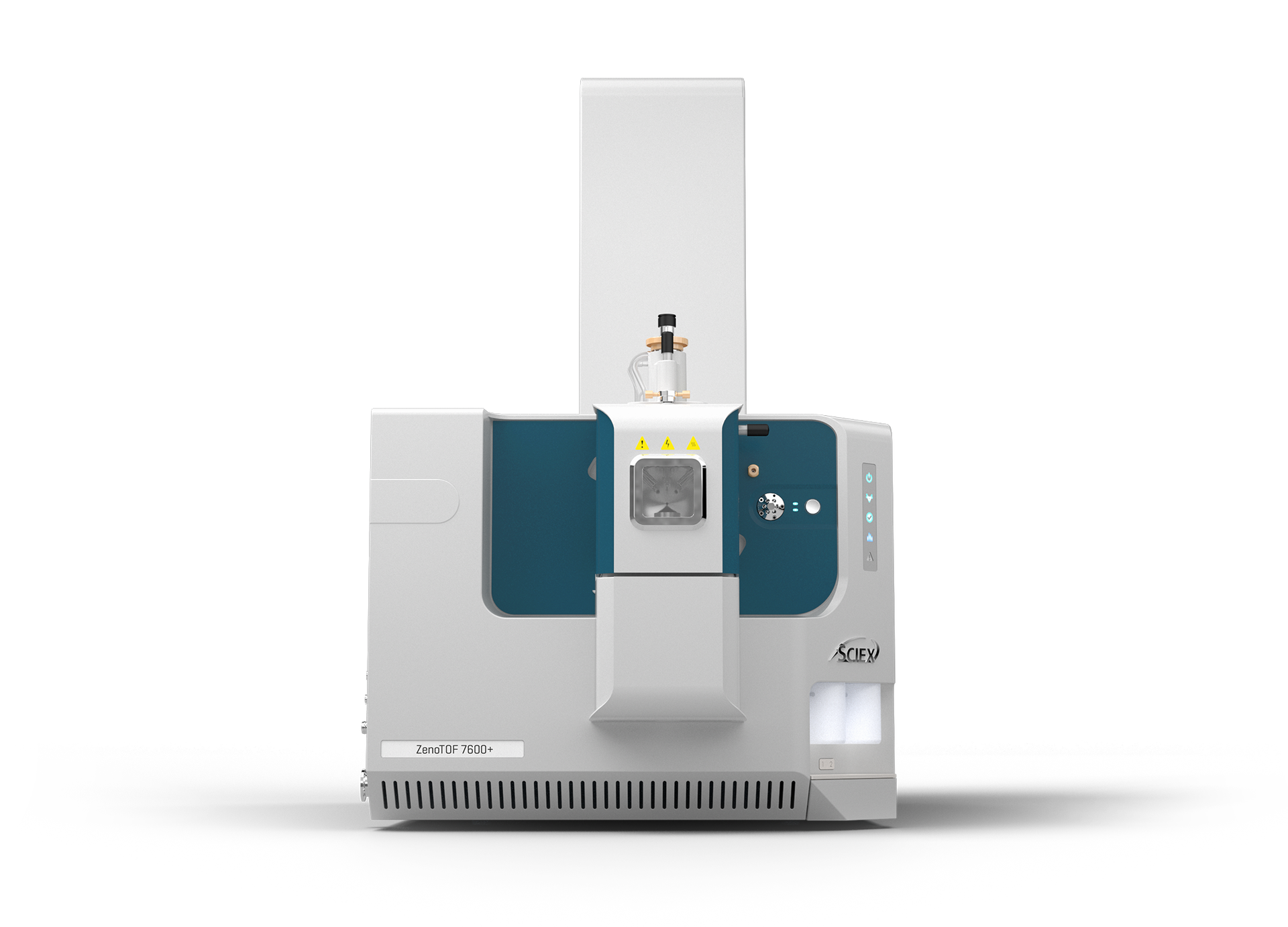Introducing ZT Scan DIA
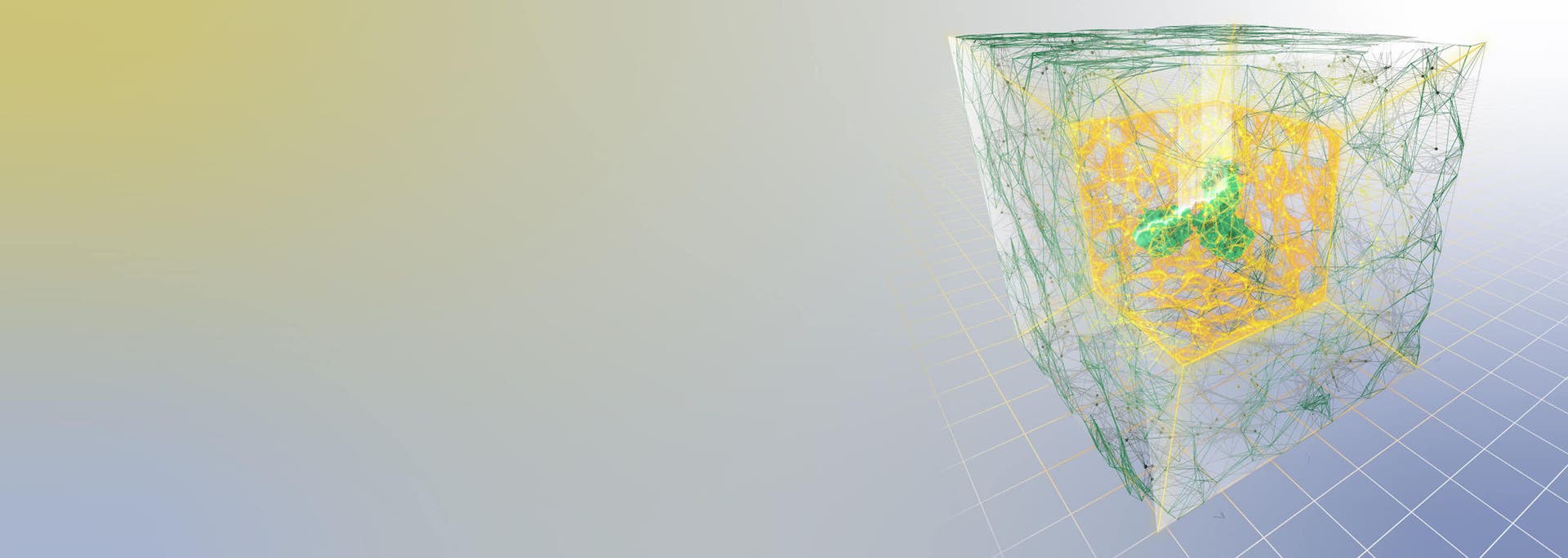
Introducing ZT Scan DIA
Quantitative proteomics - the numbers that count.
In biomarker research, scientists often struggle to translate insights into actionable data due to the balance between data depth and measurement quality. For proteomics studies, quantifying numerous proteins quickly is crucial for large-scale clinical research. Yet, sensitive techniques are needed for detecting low abundance proteins in cell and drug studies with small sample sizes.
Traditionally, researchers faced a dilemma: prioritize sensitivity and specificity for a few proteins, or sacrifice precision and data quality to quantify many proteins broadly. ZT Scan DIA combines the depth of data independent acquisition methods with the precision of targeted approaches. This innovative method allows precise quantitation of entire proteomes with exceptional speed and sensitivity, overcoming previous limitations.
Welcome to the future of quantitative proteomics, where the numbers that truly count are the proteins quantified and the precision of their measurement.
Target, validate and translate with ZT Scan DIA
Whether confirming a biomarker as the right target or validating a new translational biomarker for drug discovery, determining the pathway for biotherapeutic efficacy demands timely and precise decisions.
Biology beyond protein ID
For quantitative proteomics, ZT Scan DIA bridges the gap between protein identification and translation, enabling you to make informed decisions based on quantitation at unparalleled speed, accuracy and precision.
With the added dimension of data from quadrupole scanning, ZT Scan DIA brings certainty to your research, enabling precise decisions on which protein biomarker to validate and which therapeutic pathway to choose.
Biological relevance at speed
Translational certainty requires a depth of proteome coverage that can be accurately validated at scale.
ZT Scan DIA data allows you to precisely quantify proteins with no compromise in depth or coverage. With up to 10-fold improvement in throughput for protein quantitation, ZT Scan DIA enables 1-minute analyses for low to moderate protein loads.
Biological nuances unlocked
In biomarker discovery and development, low protein load analysis exposes measurement vulnerabilities, increasing the need for precision and reducing margins of error.
With ZT Scan DIA, navigate these risks with up to 9 fold increase in protein coverage at low loads. This enhanced protein coverage will help you negate those frailties with increased certainty to make precise decisions.
Above is a summary of the improvements in protein coverage depth with ZT Scan DIA, represented by the fold-change gain in overall sequence coverage per protein (A), the differential in actual sequence coverage per protein (B), and the change in number of amino acid residues identified per protein (C) using ZT Scan DIA relative to Zeno SWATH DIA. ZT Scan DIA extends protein characterization depth through higher confidence identifications of peptides, particularly those from lower abundance proteins.
(Mixed species sample: human (HEK 293 + MCF7) + yeast + mouse + drosophila extract tryptic digest, acquired either with ZT Scan DIA method (750 Da/sec, 5 Da window) or Zeno SWATH DIA (65 variable-width windows))
Related products
Take quantitative accuracy to the next level. Combine fast scanning and sensitivity on a Zeno trap-enabled QTOF system to maximize the total number of high-quality MS/MS spectra generated per cycle. Extend the depth and certainty of quantitative measurements to unravel the complexity of proteomics samples.
